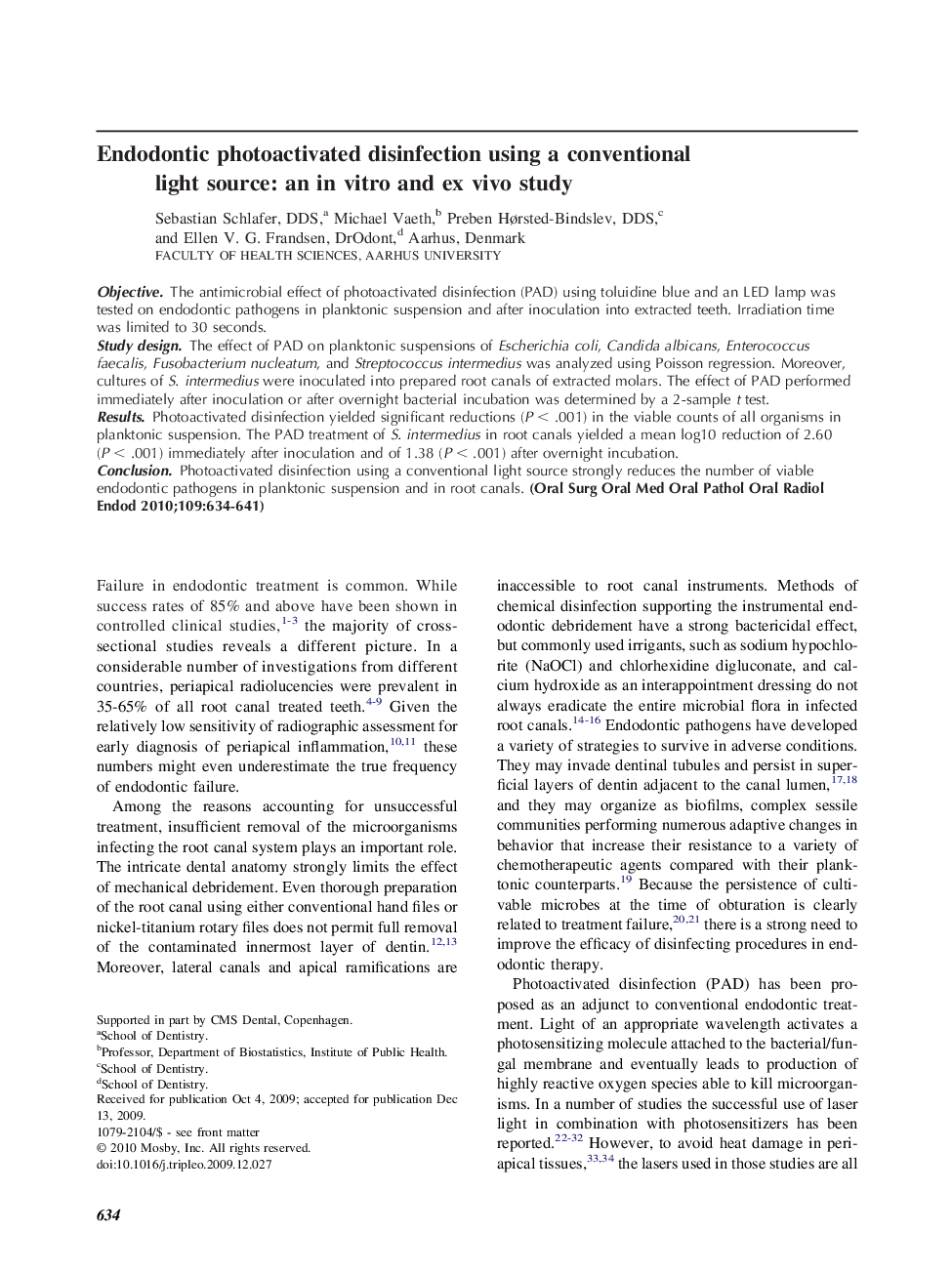| Article ID | Journal | Published Year | Pages | File Type |
|---|---|---|---|---|
| 3167602 | Oral Surgery, Oral Medicine, Oral Pathology, Oral Radiology, and Endodontology | 2010 | 8 Pages |
ObjectiveThe antimicrobial effect of photoactivated disinfection (PAD) using toluidine blue and an LED lamp was tested on endodontic pathogens in planktonic suspension and after inoculation into extracted teeth. Irradiation time was limited to 30 seconds.Study designThe effect of PAD on planktonic suspensions of Escherichia coli, Candida albicans, Enterococcus faecalis, Fusobacterium nucleatum, and Streptococcus intermedius was analyzed using Poisson regression. Moreover, cultures of S. intermedius were inoculated into prepared root canals of extracted molars. The effect of PAD performed immediately after inoculation or after overnight bacterial incubation was determined by a 2-sample t test.ResultsPhotoactivated disinfection yielded significant reductions (P < .001) in the viable counts of all organisms in planktonic suspension. The PAD treatment of S. intermedius in root canals yielded a mean log10 reduction of 2.60 (P < .001) immediately after inoculation and of 1.38 (P < .001) after overnight incubation.ConclusionPhotoactivated disinfection using a conventional light source strongly reduces the number of viable endodontic pathogens in planktonic suspension and in root canals.
